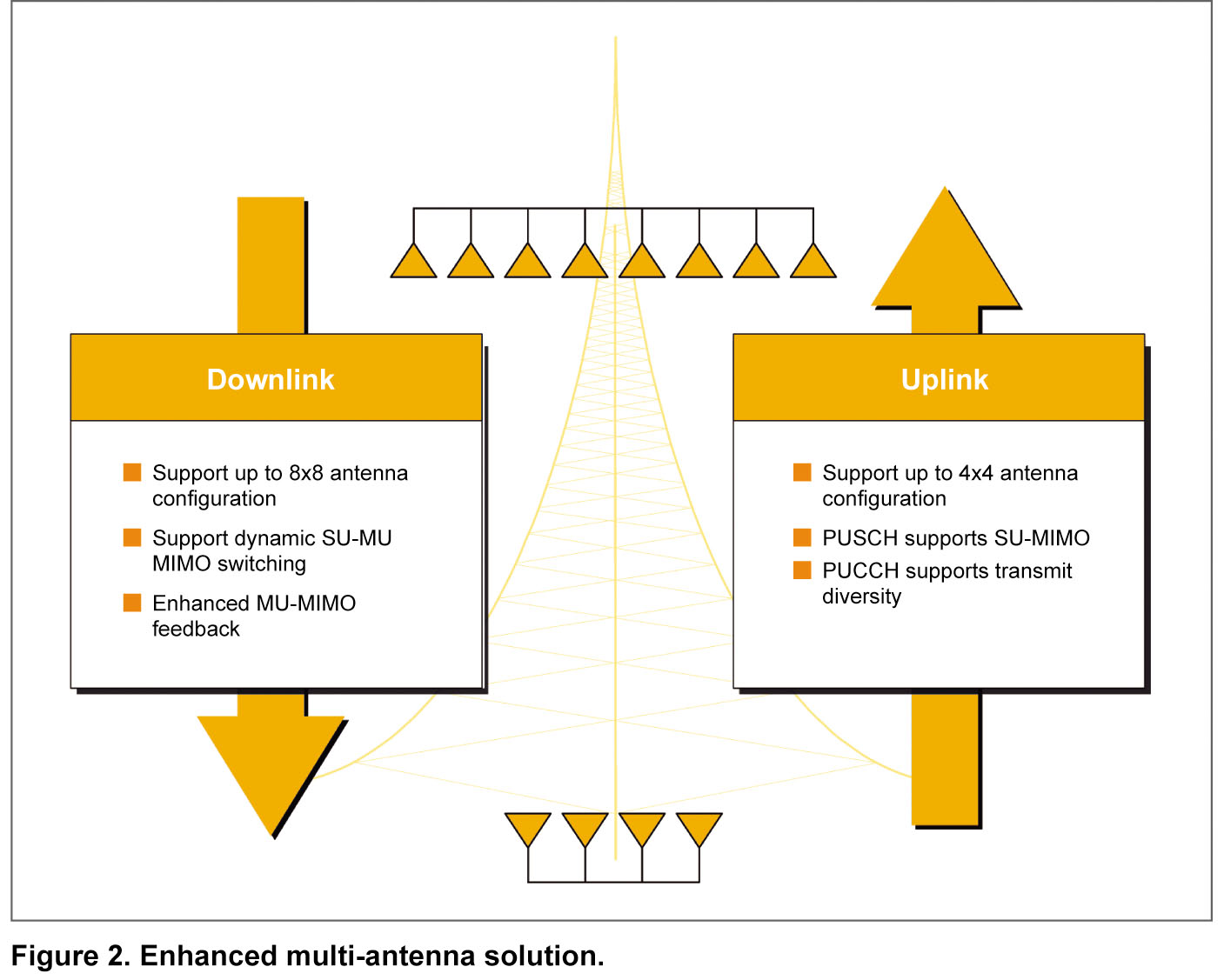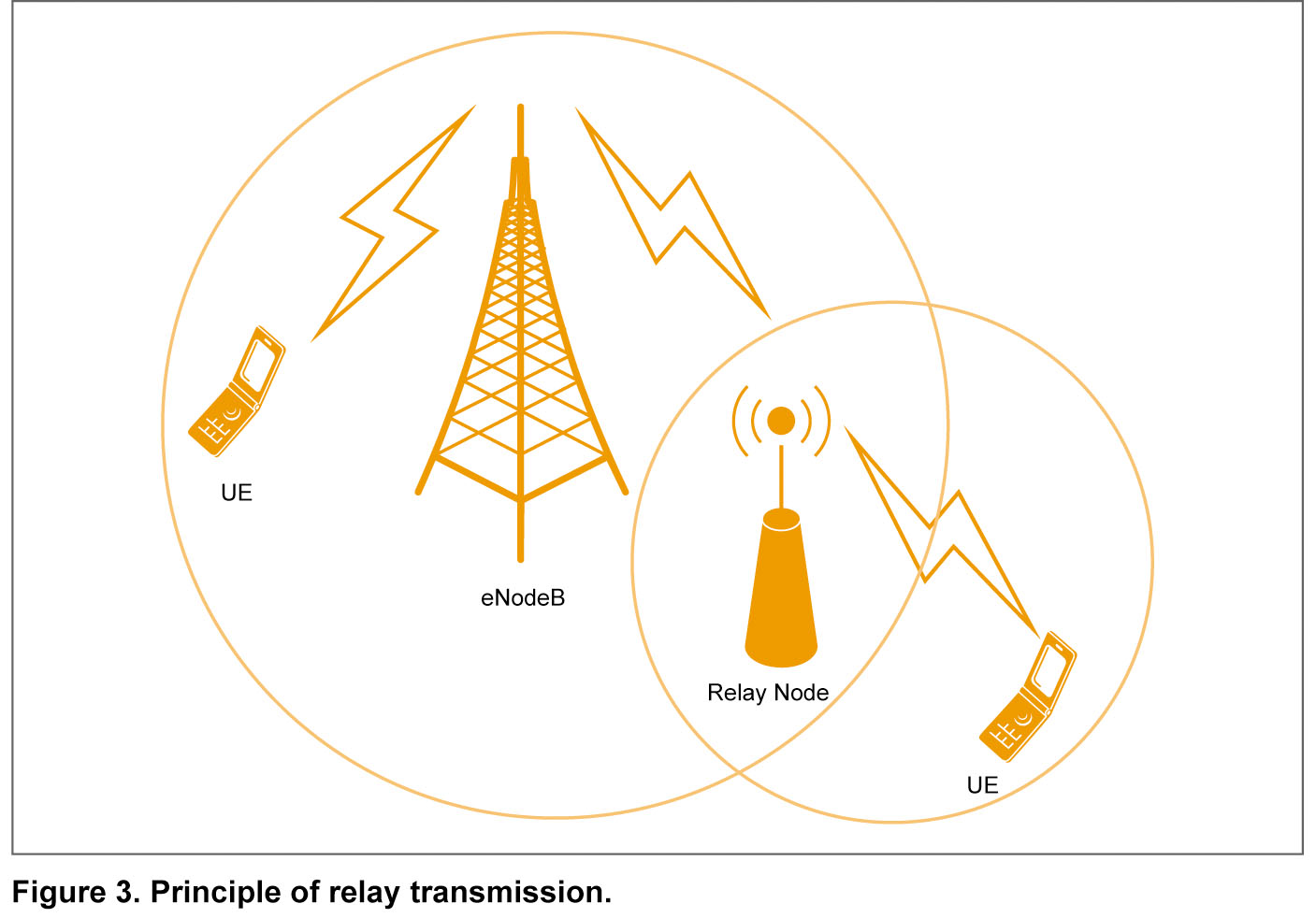LTE-A Leads Future Wireless Communications
For its high speed and low latency, LTE has attracted much attention from leading telecom operators and equipment vendors worldwide. Operators are now increasing their LTE investments, and are actively engaged in LTE testing. Commercial LTE networks have been available since 2010. To ensure long-term evolution and compliance with IMT-Advanced (IMT-A) specifications, 3GPP has initiated research into LTE-Advanced (LTE-A) and has adopted it as the preferred 4G candidate.
LTE-A―smoothly evolved from LTE―boasts higher peak data rates (1Gbps in the downlink and 500Mbps in the uplink), and higher spectral efficiency (30bit/s/Hz in the downlink and 15bit/s/Hz in the uplink). It supports various deployment scenarios, enabling seamless coverage from macro cells to indoor areas.
Key Techniques for LTE-A
A number of new technologies have been introduced into LTE-A to meet IMT-A requirements. These key techniques include Carrier Aggregation (CA), enhanced MIMO, relay, and Coordinated Multi-Point Tx/Rx (CoMP).
■ Carrier aggregation
To reach the required peak rates, LTE-A supports a maximum bandwidth of 100MHz. Such high bandwidth is hard to find in the available spectrum resource, and also poses a great challenge to hardware design of eNodeB and User Equipment (UE). Moreover, a key technique is needed to fully utilize spectrum scattered on various frequency bands. To meet these requirements, CA has been introduced into LTE-A.

CA supports both continuous and non-continuous Component Carrier (CC), as shown in Figure 1. This not only improves peak data rates and system throughput, but also addresses the issue of spectrum discontinuity. Asymmetric carrier aggregation is also supported in LTE-A. In a typical scenario of asymmetric carrier aggregation, downlink bandwidth is larger than uplink bandwidth.
To allow compatibility with LTE, LTE-A Rel-10 specifies that each CC adopts existing LTE bandwidth and is backward compatible with LTE. In LTE-A Rel-11 or above, other non-backward compatible carriers will be introduced. In practical scenarios for carrier aggregation, one or more CCs can be scheduled per UE depending on the transmission requirement and capability.
■ Enhanced MIMO
Multi-antenna technology improves channel capacity and spectral efficiency by expanding transmission dimension. In LTE-A, more antennas are supported in the uplink and downlink, and Multi-User Multi-Input Multi-Output (MU-MIMO) is enhanced in the downlink, as shown in Figure 2.

Compared with LTE Rel-8 (which supports single-antenna transmission), in the uplink, LTE-A supports up to four transmit antennas. For the Physical Uplink Shared Channel (PUSCH), up to two codewords and four layers are supported with Single-User Multi-Input Multi-Output (SU-MIMO). For the Physical Uplink Control Channel (PUCCH), transmission quality is improved through transmit diversity.
In the downlink, the number of transmit antennas is expanded from four to eight, and up to two codewords and eight layers are supported. This greatly improves downlink transmission throughput and spectrum efficiency. Moreover, dynamic switching of SU-MIMO and MU-MIMO is supported, and performance of downlink MU-MIMO is optimized through enhanced feedback of Channel State Information (CSI) and a new codebook design.
■ Relay
In relay transmission, a relay node or relay station is introduced between eNodeB and UE. The relay node is connected to eNodeB via a wireless link. In the downlink, data is transmitted from eNodeB to relay node, and then to the end user, while in the uplink, data is transmitted from the end user to relay node, and then to eNodeB, as shown in Figure 3. In LTE-A, relay is used as a tool to improve high-data-rate coverage, to support group mobility and temporary network deployment, and to enhance cell-edge throughput

Relay falls into two categories: type 1 and type 2. Type 1 relay has an independent cell ID, and provides resource scheduling and hybrid automatic retransmission functions. For an LTE Rel-8 UE, type 1 relay works as an eNodeB; however for an LTE-A UE, type 1 relay has more powerful functions than an eNodeB. Type 2 relay has no independent cell ID, and no control information except traffic is transmitted. Type 1 relay is now adopted in LTE-A Rel-10.
■ CoMP
In LTE-A, CoMP is considered a useful tool for improving high-data-rate coverage, cell-edge throughput, and system throughput in both heavy and light load scenarios.
CoMP involves uplink CoMP reception and downlink CoMP transmission. Uplink CoMP reception improves cell-edge user throughput by joint multi-cell reception of user data, and this has very limited impact on RAN1 specifications. Depending on whether traffic data is obtained at multiple coordinated points or not, downlink CoMP transmission is divided into Joint Processing (JP) and Coordinated Scheduling/Beamforming (CS/CB). JP achieves transmission gain through joint processing, while CS/CB reduces inter-cell interference through coordination, as shown in Figure 4.

To support different CoMP transmission modes, UE needs to provide feedback on channel state information. Three feedback schemes are defined for CoMP: explicit feedback, implicit feedback, and Sounding Reference Symbol (SRS)-based feedback. For explicit feedback, UE feeds back information such as channel coefficient and channel rank without preprocessing channel state information. For implicit feedback, UE preprocesses channel state information under certain assumptions, and feeds back information such as precoding matrix indicator and channel quality indicator to eNodeB. For SRS-based feedback, eNodeB uses channel reciprocity and obtains equivalent downlink channel state information according to the SRS sent by UE. This scheme is suitable for a TDD system.
Prospects of LTE-A
Carrier aggregation uses band aggregation to expand transmission bandwidth; enhanced MIMO increases cell throughput by further expanding MIMO dimension; relay improves coverage through relay of radio transmission; and CoMP increases cell-edge throughput by coordinating multiple cells. By introducing these key techniques, LTE-A can meet or even surpass all IMT-A requirements.
As of July 2010, ZTE has concluded seven LTE commercial contracts, and built nearly 50 LTE trial networks for telecom operators worldwide. The company also places great importance on LTE-A, taking an active part in drafting related standards and submitting proposals that have been adopted by 3GPP. With in-depth research into key LTE-A techniques, ZTE has developed an array of competitive solutions. ZTE is now working hard to develop a LTE-A prototype, and has made good inroads to this end.
ZTE is leading the telecommunications industry toward wireless broadband communications. In 2012, its LTE-A-based eNodeBs are expected to be deployed globally. This will allow people to enjoy feature-rich multimedia services and high-speed connectivity using mobile broadband.